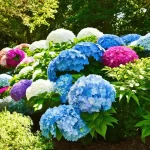hydrangea with black leaves is a striking phenomenon that captures the attention of gardeners and plant enthusiasts alike. While these dark-leaved hydrangeas can add a unique aesthetic appeal to your garden, understanding the reasons behind the blackening of leaves is crucial for their care and maintenance. These dark hues can signal different conditions, including environmental stress, disease, or even a deliberate choice in plant selection.
The Alluring Dark Leaf Hydrangeas
Hydrangeas come in various colors and forms, but the dark leaf hydrangeas, such as the Eclipse® Bigleaf Hydrangea, have garnered special attention. The Eclipse variety showcases dark purple leaves that can often appear nearly black, making them a standout in any landscape.
Popular Dark Leaf Hydrangea Varieties:
| Variety Name | Leaf Color | Flower Color |
|---|---|---|
| Eclipse® Bigleaf | Dark Purple/Black | Pink/Blue |
| Midnight® Hydrangea | Deep Green/Black | White |
| Black Lace® Elderberry | Dark Purple/Black | White |
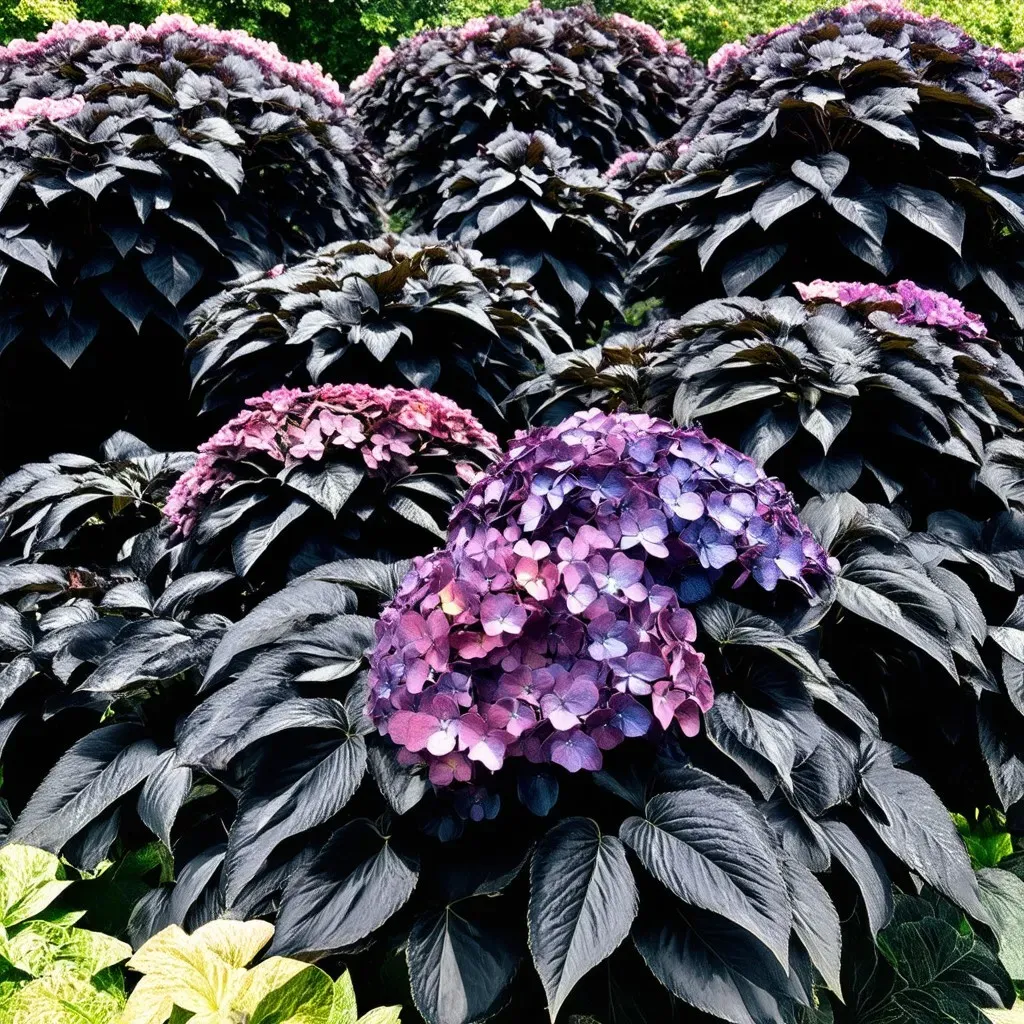
Why Are My Hydrangea Leaves Turning Black?
-
Overwatering or Poor Drainage: One of the most common reasons for hydrangea leaves turning black is an excess of water. Overwatered hydrangeas can’t absorb nutrients properly, leading to blackened foliage.
-
Underwatering: Conversely, drought stress can also cause leaf blackening, highlighting the need for a consistent watering schedule.
-
Environmental Stress: Temperature fluctuations, especially frost, can similarly impact leaf coloration.
-
Fungal Infections: Fungi like Cercospora and Anthracnose can lead to black spots on the leaves and stems of hydrangeas. Identifying these infections quickly is key to effective treatment.
Table of Main Causes for Hydrangea Leaf Discoloration
| Cause | Description | Solution |
|---|---|---|
| Overwatering | Roots drown, leading to nutrient uptake failure | Improve drainage, reduce watering |
| Underwatering | Lack of moisture causes stress | Regular watering schedule |
| Fungal Infections | Spots develop and spread on leaves | Fungicides, remove affected leaves |
| Nutrient Deficiency | Lack of essential nutrients leads to discoloration | Fertilize regularly |
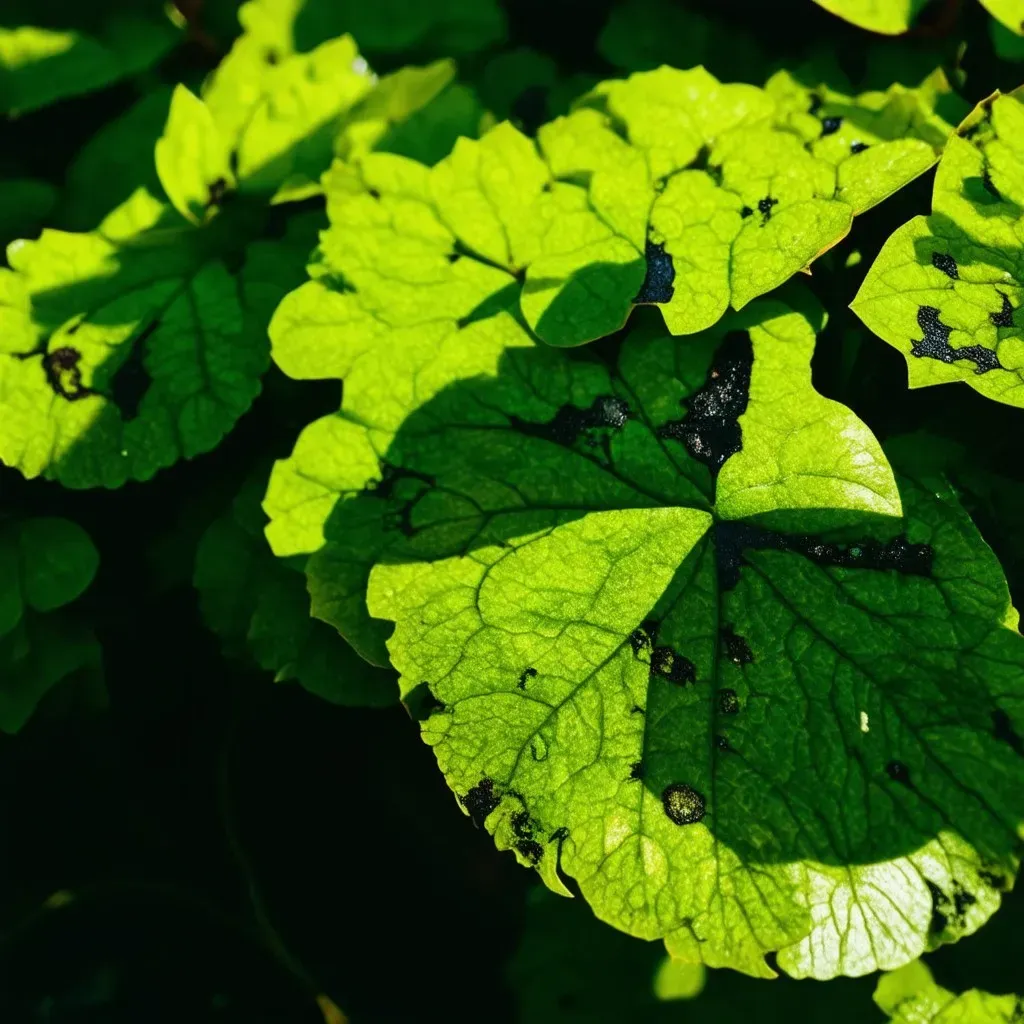
Black Spots on Stems and Leaves
Black spots on stems, a typical symptom of fungal disease, can hinder the plant’s growth and overall health. Infected leaves may also develop black spots along the edges.
Common Issues to Look Out For:
-
Cercospora Leaf Spot: This fungal disease results in circular spots with a purple halo. It begins small and enlarges over time, often leading to leaf drop.
-
Anthracnose: This is a more severe fungus that can cause widespread damage. It typically affects the older leaves first.
Diagnostic Signs and Solutions
| Symptom | Possible Cause | Treatment |
|---|---|---|
| Black spots on leaves | Cercospora or Anthracnose | Apply approved fungicide |
| Wilted or dropping leaves | Over/underwatering | Adjust watering habits |
| Dry, curled leaves | Nutrient deficiency | Fertilize with slow-release mix |
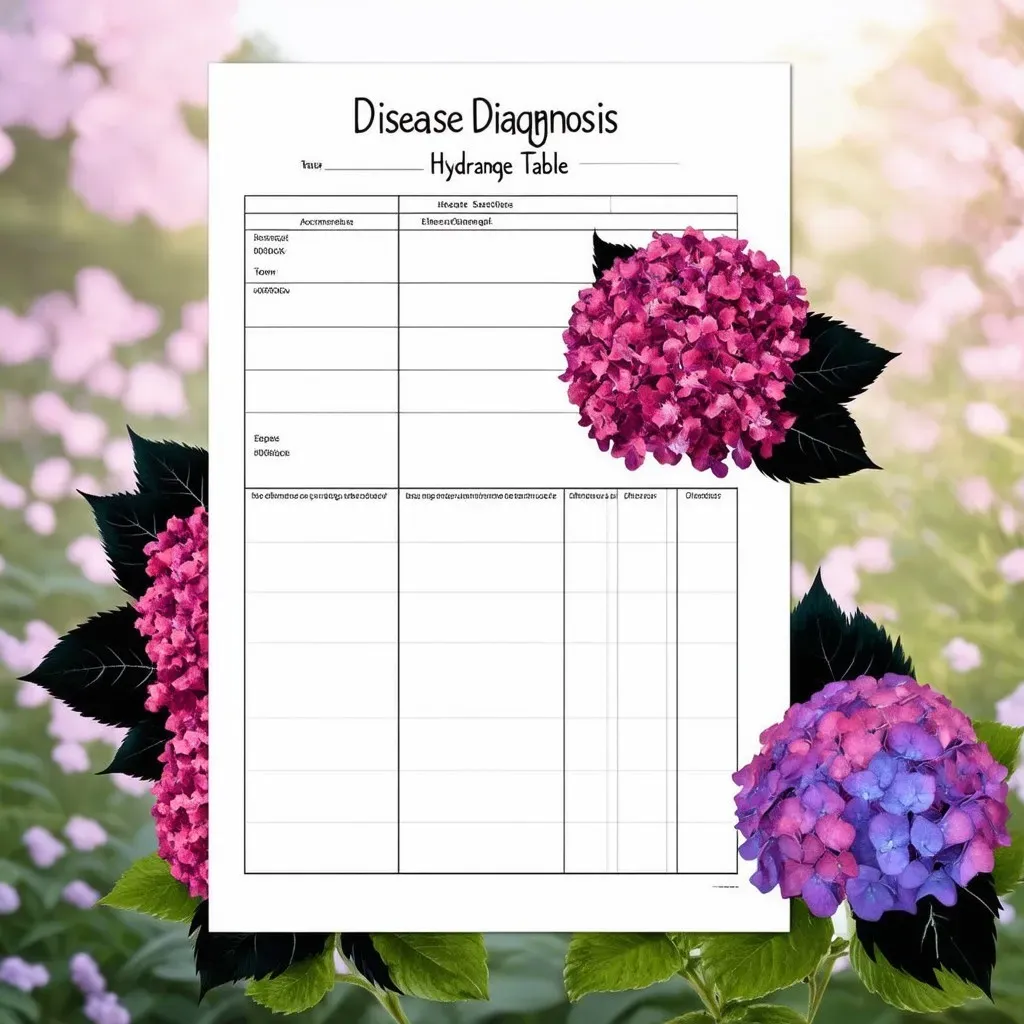
Preventing Hydrangea Leaf Discoloration
Best Practices for Hydrangea Care:
-
Water Wisely: Ensure hydrangea plants receive adequate water, allowing the top 1-2 inches of soil to dry out before watering again.
-
Fertilization: Regularly apply a balanced fertilizer to ensure nutrient availability.
-
Airflow: Proper spacing between plants prevents fungal diseases by promoting airflow.
-
Sanitation: Regularly remove fallen leaves and debris around the plants to minimize fungal spores.
-
Fungicide when Necessary: If you notice early signs of disease, applying a fungicide can help control the spread of infections.
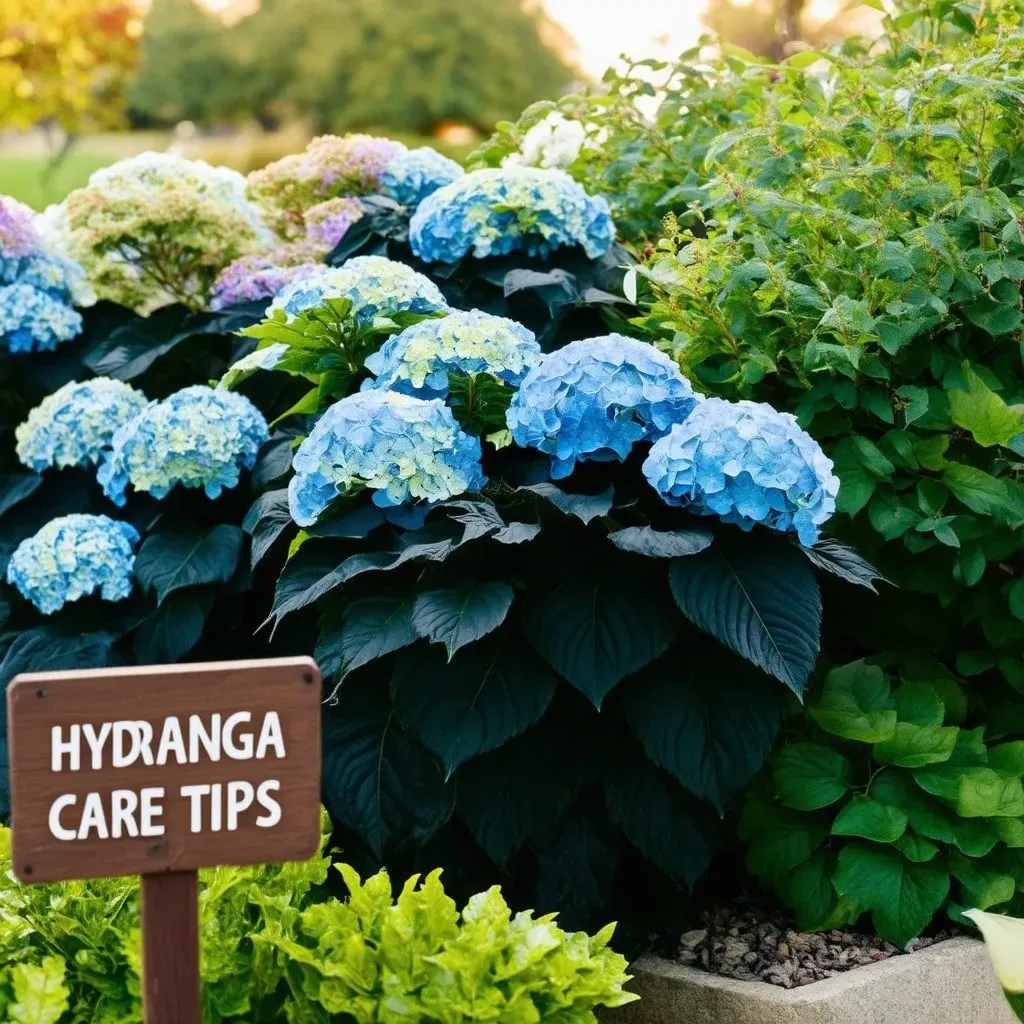
FAQs about Hydrangea with Black Leaves
Why do my hydrangea leaves have black spots?
Black spots on hydrangea leaves are commonly caused by fungal diseases such as Cercospora or Anthracnose. Taking immediate action can prevent further damage.
Can I stop my hydrangea leaves from turning black?
Yes. By maintaining appropriate watering, providing adequate nutrients, and observing for signs of disease, you can prevent leaf blackening.
Are hydrangeas with black leaves more susceptible to diseases?
Not necessarily. The black color of hydrangea leaves can be a natural variety characteristic or a sign of stress or disease. It is vital to monitor plant health closely regardless of leaf color.
Where can I find more information on hydrangea care?
For comprehensive guidance on Hydrangea Problems, you can visit Better Homes & Gardens for expert tips and solutions regarding Hydrangea Care.
How should I treat black spots on my hydrangeas?
Treatment involves identifying the cause (fungal infection, overwatering, etc.) and applying appropriate remedial measures. Fungicides may be necessary for persistent fungal issues.
Understanding the nuances of hydrangea care, especially when dealing with hydrangea with black leaves, allows gardeners to create stunning landscapes while ensuring the health of these magnificent plants.

